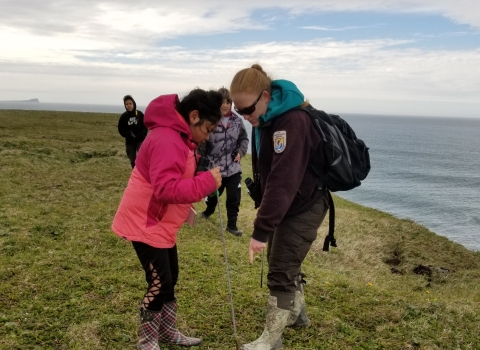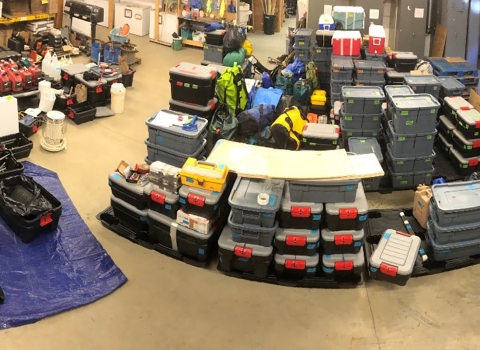Projects and Research
In addition to our ongoing programs of seabird inventory and monitoring and engaging with our neighboring communities, our staff works on a variety of projects with partners.
Our seabird monitoring program provides long-term, time-series data. When the data reveal biologically-significant changes, scientists can test hypotheses about the causes of those changes. This long-term monitoring program is an integral part of the management of the Alaska Maritime Refuge. The information it provides is used to define...
For over 20 years we have worked with partners to provide hands-on educational summer programming for youth in Unalaska, St. Paul Island, and Sand Point. While we may be inviting kids onboard the Research Vessel Tiglax̂ for a ship tour, building ORV's, or learning bird identification skills, other instructors are teaching traditional ways of knowing including the Unangam Tunuu language,...
As part of the National Wetlands Inventory, we are mapping and digitizing high priority wetlands in Alaska’s 16 National Wildlife Refuges.
The U.S. Fish and Wildlife Service is the principal federal agency tasked with providing public information on the status and trends of our Nation's wetlands. Our National Wetlands Inventory provides detailed information...
To limit the introduction and spread of invasive species throughout remote parts of the state, we're facilitating early decision planning and improving biosecurity measures throughout Alaska. This involves the use of decision support tools such as habitat suitability models, horizon scanning, and Hazard Analysis and Critical Control Point analyses. Each tool helps to assess the risk and...
Invasive Species Program staff collaborate with Alaska's National Wildlife Refuge, the State of Alaska and other partners to protect Alaska's lands and waters by working to detect invasive species infestations while they’re still relatively small and have the highest chance of being successfully eradicated. We survey terrestrial, freshwater, and marine environments for invasive plants and...






